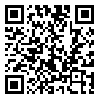Volume 16, Issue 2 (9-2018)
sjsph 2018, 16(2): 164-179 |
Back to browse issues page
Download citation:
BibTeX | RIS | EndNote | Medlars | ProCite | Reference Manager | RefWorks
Send citation to:



BibTeX | RIS | EndNote | Medlars | ProCite | Reference Manager | RefWorks
Send citation to:
Tol A, Mohebbi B, Shakibazadeh E, Yaseri M, Sabouri M. Predictors of Empowerment of Reproductive-Age Women Referring to Health Centers in South Tehran to Receive Health Care Services. sjsph 2018; 16 (2) :164-179
URL: http://sjsph.tums.ac.ir/article-1-5646-en.html
URL: http://sjsph.tums.ac.ir/article-1-5646-en.html
1- Ph.D. Department of Health Education and Promotion, School of Public Health, Tehran University of Medical Sciences, Tehran, Iran
2- MD. Assistant Professor, Rajaie Cardiovascular Medical and Research Center, School of Medicine, Iran University of Medical Sciences, Tehran, Iran
3- Ph.D. Associate Professor, Department of Health Education and Promotion, School of Public Health, Tehran University of Medical Sciences, Tehran, Iran
4- Ph.D. Assistant Professor, Department of Epidemiology and Biostatistics, School of Public Health, Tehran University of Medical Sciences, Tehran, Iran
5- MSc. Student, Department of Health Education and Promotion, School of Public Health, Tehran University of Medical Sciences, Tehran, Iran
2- MD. Assistant Professor, Rajaie Cardiovascular Medical and Research Center, School of Medicine, Iran University of Medical Sciences, Tehran, Iran
3- Ph.D. Associate Professor, Department of Health Education and Promotion, School of Public Health, Tehran University of Medical Sciences, Tehran, Iran
4- Ph.D. Assistant Professor, Department of Epidemiology and Biostatistics, School of Public Health, Tehran University of Medical Sciences, Tehran, Iran
5- MSc. Student, Department of Health Education and Promotion, School of Public Health, Tehran University of Medical Sciences, Tehran, Iran
Abstract: (3898 Views)
Background and Aim: In health promotion, empowerment is a process through which people gain greater control over decisions and actions affecting their health. This study aimed to assess the predictive factors of health care empowerment among women in reproductive age in 2016.
Materials and Methods: This cross-sectional study was conducted on 549women in reproductive age referring to health centers in South Tehran. The participants were recruited through cluster and multi-stratified sampling. Data were collected using the Health Care Empowerment Questionnaire (HCEQ), which has three subscales, namely, degree of control, involvement in interactions and involvement in decision-making. The data were analyzed using the descriptive and analytical tests and multi-regression analysis.
Results: Husbands' education level, women's employment, family size, ethnicity, history of chronic diseases and economic status were predictors of degree of control. Husbands' education level (under high school diploma and high school diploma), family size (2-3, 3-4) and moderate economic status (sufficient income) predicted involvement in interactions. In addition, husbands' education (incomplete high school diploma and high school diploma), family size (2-3, 3-4), women's employment and history of chronic diseases predicted involvement in decision-making.
Conclusion: The findings indicate that various individual, family and socio-economic conditions of reproductive-age women influence their potential empowerment for receiving health care services. A family-based approach to facilitate receiving reproductive health care seems to be essential.
Materials and Methods: This cross-sectional study was conducted on 549women in reproductive age referring to health centers in South Tehran. The participants were recruited through cluster and multi-stratified sampling. Data were collected using the Health Care Empowerment Questionnaire (HCEQ), which has three subscales, namely, degree of control, involvement in interactions and involvement in decision-making. The data were analyzed using the descriptive and analytical tests and multi-regression analysis.
Results: Husbands' education level, women's employment, family size, ethnicity, history of chronic diseases and economic status were predictors of degree of control. Husbands' education level (under high school diploma and high school diploma), family size (2-3, 3-4) and moderate economic status (sufficient income) predicted involvement in interactions. In addition, husbands' education (incomplete high school diploma and high school diploma), family size (2-3, 3-4), women's employment and history of chronic diseases predicted involvement in decision-making.
Conclusion: The findings indicate that various individual, family and socio-economic conditions of reproductive-age women influence their potential empowerment for receiving health care services. A family-based approach to facilitate receiving reproductive health care seems to be essential.
Keywords: Empowerment, Degree of Control, Involvement in Interactions, Involvement in Decision-Making, Health Care Empowerment, Women
Type of Study: Research |
Subject:
Public Health
Received: 2018/09/18 | Accepted: 2018/09/18 | Published: 2018/09/18
Received: 2018/09/18 | Accepted: 2018/09/18 | Published: 2018/09/18
| Rights and permissions | |
 |
This work is licensed under a Creative Commons Attribution-NonCommercial 4.0 International License. |





